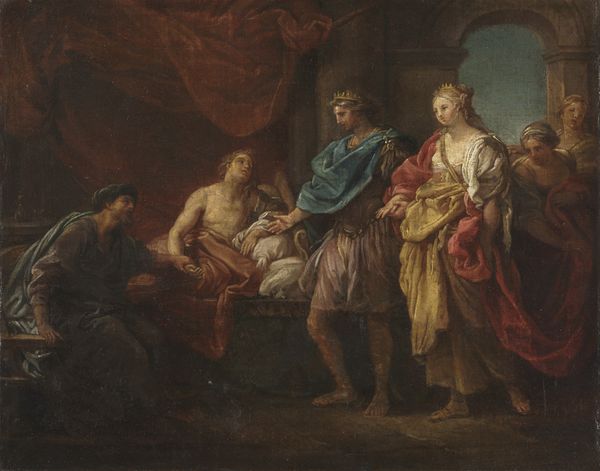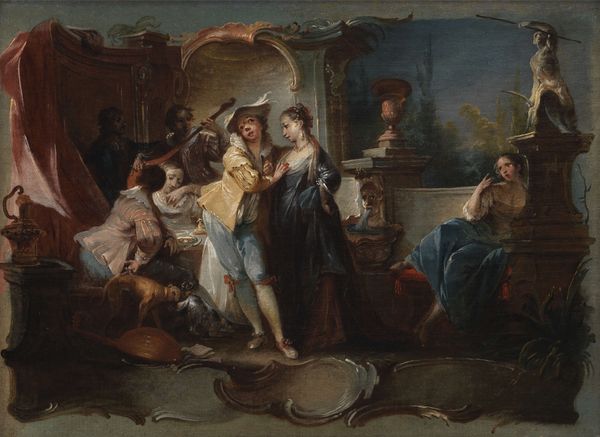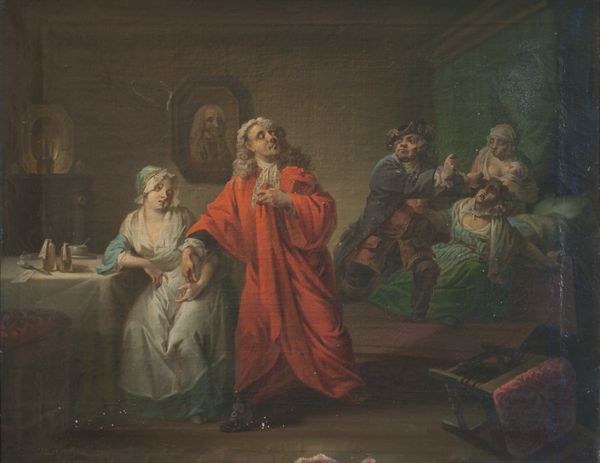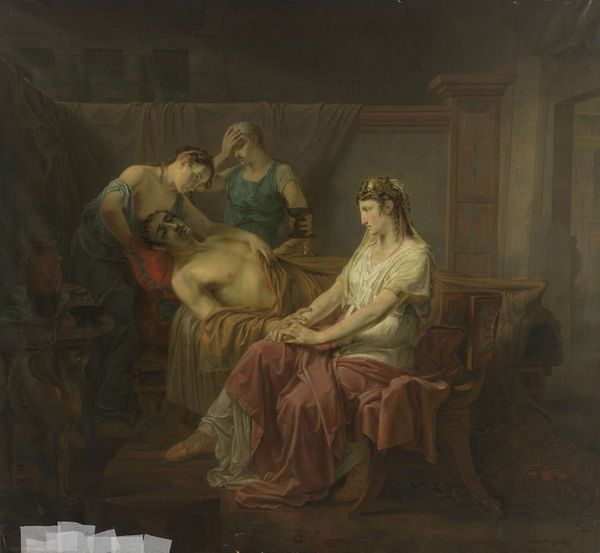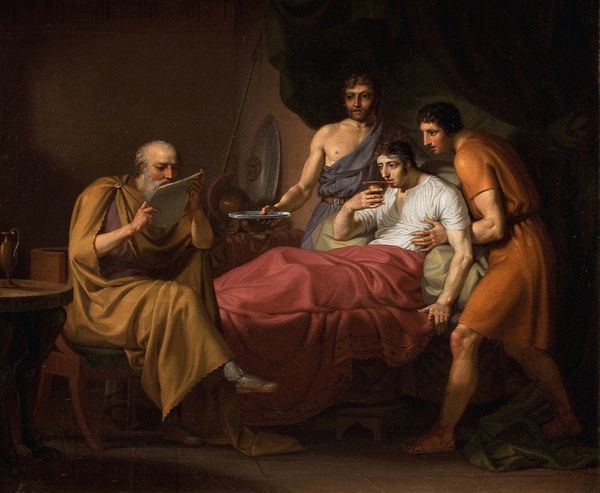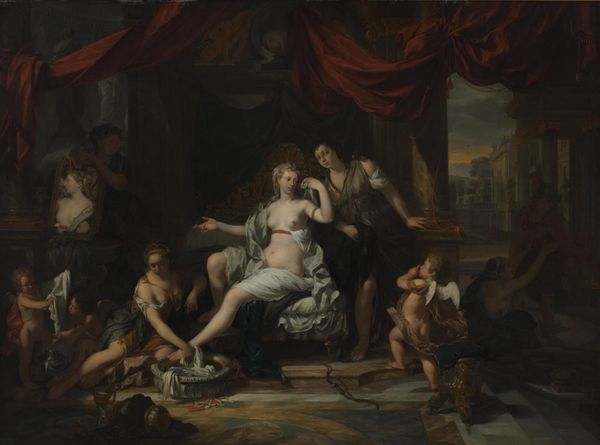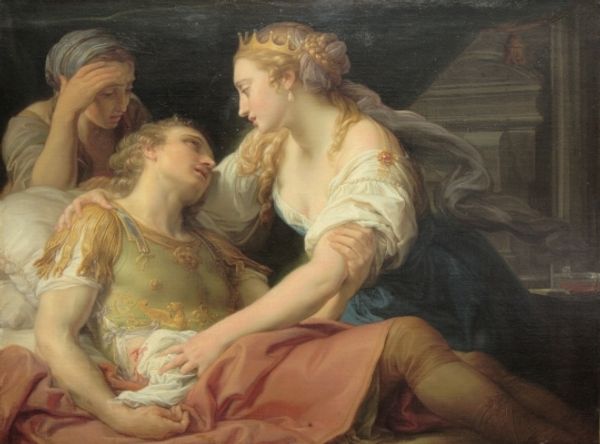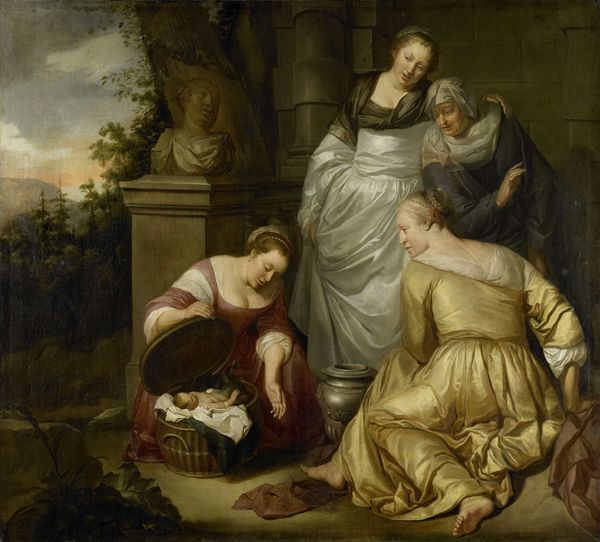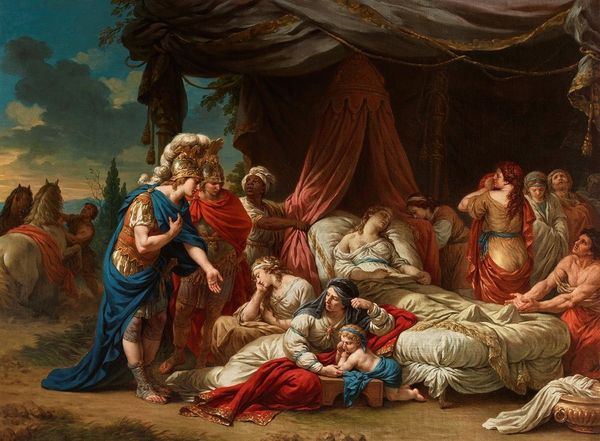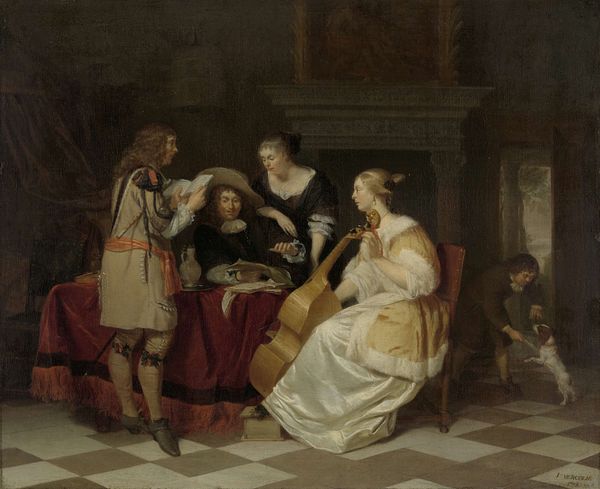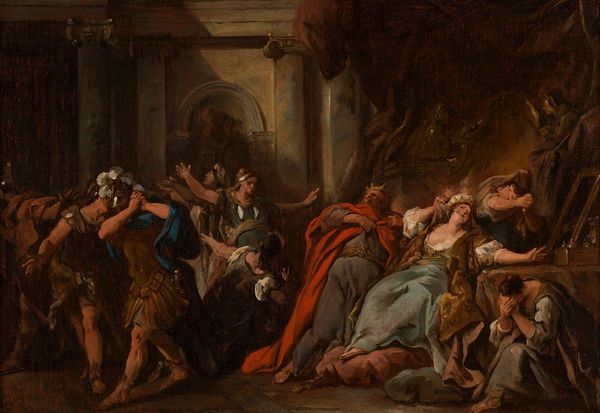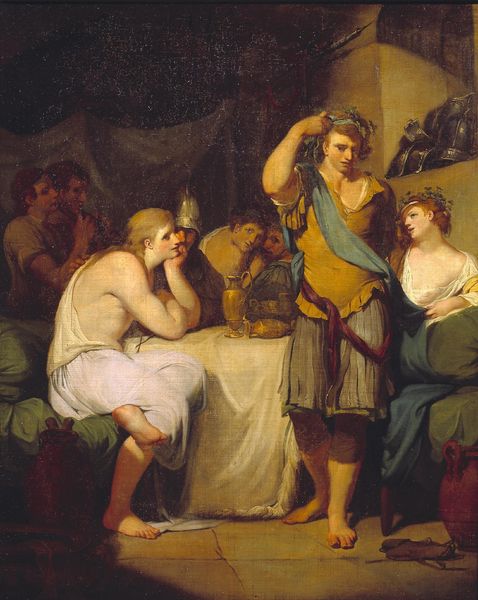
painting, oil-paint
#
portrait
#
narrative-art
#
baroque
#
painting
#
oil-paint
#
figuration
#
history-painting
Dimensions: 38 9/16 × 53 9/16 in. (98.2 × 136 cm)
Copyright: Public Domain
Curator: Standing before us is Stefano Pozzi’s "Antiochus Yearning for Stratonice," a painting from about 1740, which can be found here at The Art Institute of Chicago. Editor: The entire scene is cast in this theatrical light; it's all flowing robes and rather exaggerated gestures that lend an airy mood despite the underlying drama. Curator: Pozzi chose to depict a rather intriguing story, popular in art of the 18th century. We see Antiochus, son of King Seleucus, sick with a mysterious illness which is, of course, unrequited love for his stepmother, Stratonice. The painting dramatizes a key moment of revelation within a very public, even politically charged arena. Editor: The way Pozzi uses color to isolate the figures of Antiochus, Stratonice, and Seleucus creates such a strong visual dynamic. The muted palette heightens the tension. Antiochus appears almost luminous against the darker tones of his bedchamber. Curator: Yes, notice how Seleucus, seemingly consumed by the weight of the revelation, dominates the foreground? It’s a brilliant staging of power, vulnerability, and even marital bonds during a period hungry for displays of moral guidance. The fact that this episode from Plutarch’s "Lives" got repeatedly visually restaged really speaks to anxieties circling themes of familial duty and private passions. Editor: It's hard to ignore how the composition directs our eye across the painting. It moves from the son on his sickbed, towards Stratonice whose downcast gaze contrasts sharply with Seleucus who's grappling with the implications, as figures look on, trapped in the ripples of consequence and betrayal. Curator: The painting's impact then extends beyond pure aesthetic experience. Its display encourages reflection on the moral codes embedded within royal representation and the very function of didactic historical painting during the enlightenment. It is the perfect enactment of love and politics. Editor: Pozzi captured the characters, not only through gesture, but their very relationship to space. You're right; the choice of staging adds volumes to the way this scene is understood. Curator: Indeed, this exploration invites a dialogue on the public and private domains of life, doesn’t it? Editor: Absolutely. And it highlights just how much we can unpack when we combine art and social context.
Comments
No comments
Be the first to comment and join the conversation on the ultimate creative platform.
